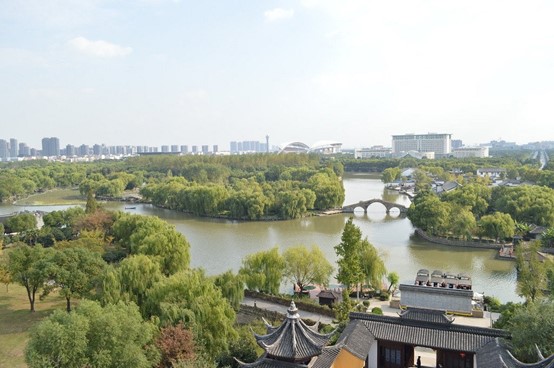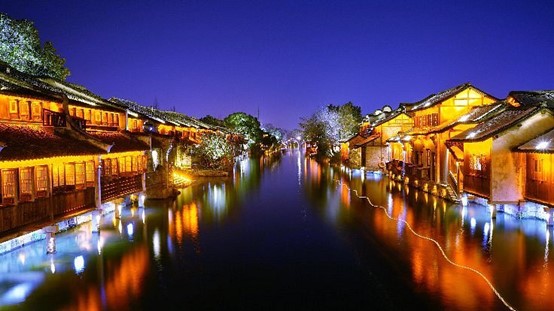Places to visit within Jiaxing city
South Lake

Alongside the lake are the ruins of the Misty Rain Tower, which was first built in the 10th century AD. In the year 1548, during the Ming Dynasty, the local government dredged the waterways and piled up the mud into the center of South Lake, forming an islet. The Misty Rain tower was rebuilt on the islet the next year. In the following years, a group of ancient garden-style architectures emerged around it.
The 1st National Congress of the Chinese Communist Party was transferred from Shanghai to Jiaxing in 1921 and the final agenda was carried out in a boat on South Lake, which concluded with the establishment of the party.
Yuehe Street

Yuehe Historic District covers a total area of 90,000 square meters. It is located near Zhongji Road, Nanhu District, Jiaxing. In the block, traditional dwellings build momentum by the water, and ancient streets and alleys twist and turn, criss-crossing; small rivers, ancient bridges, narrow lanes, old dwellings, porches, etc. restore and show the strong style of the ancient water town, reflecting the old Jiaxing “South of the Yangtze River”.
Wuzhen (around 1 hour away, taxi cost around 100 RMB)

Wuzhen, a 1300-year-old water town on the lower reaches of the Yangtze River, is a national 5A scenic area and one of China’s top ten historical & cultural towns. Located on the Hangzhou-Jiaxing-Huzhou Plain in northern Zhejiang Province, it is at the center of the golden triangle consisting of Shanghai, Hangzhou and Suzhou. Wuzhen can be easily accessed through a number of expressways and national highways.
In 2001, Wuzhen was named as a candidate for UNESCO’s World Cultural Heritage List. At the end of 2006, it was included in the revised List of China’s Candidates for UNESCO World Cultural Heritage. In 2009, Wuzhen was named as the first PATA eco-tourism destination in Mainland China.
The ancient Beijing-Hangzhou Grand Canal flows through the town, which is divided by waterways into four areas, Dongzha, Xizha, Nanzha, and Beizha. Since its foundation in 872 A.D., Wuzhen has never changed its name, location, waterways, or way of life. Traditional buildings remain intact today even after hundreds years of weathering.

